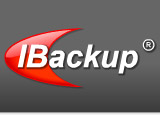Step 3.
Browse to select a temporary location on your local computer to store the MS Exchange Server backup resources.
Note: Ensure that the selected temporary folder on the local computer has sufficient free space to hold the MS Exchange Server backup resources. You cannot select the temporary location for MS Exchange Server backup on the remote location.
Step 4.
You can schedule the backup for a future date and time with the scheduling options provided.
Note: On successful backup of the MS Exchange Server databases to your IBackup Professional account, the backed up MS Exchange Server resources are stored under a folder called 'IBackupProfExchBackupset'. It is not advisable to update or delete files manually from this folder as this might interrupt the Exchange Server restore operations. Also, do not use the 'IBackupProfExchBackupset as a destination folder for any other backup or restore operations.
At any given point in time, you can maintain only one backup job named 'IBackupProfExchBackupset'. |
